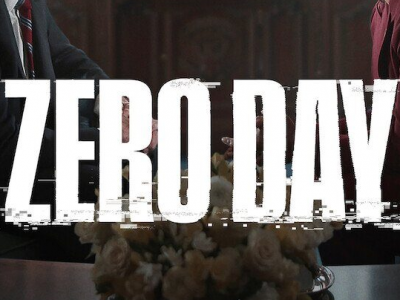In today’s hyper-connected digital world, an influencer’s reputation is their most valuable asset—and, paradoxically, their greatest risk. With millions of followers and unprecedented reach, influencers wield significant power to shape opinions, trends, and even political discourse. However, this influence comes with the inherent vulnerability of public scrutiny. One misstep, poorly worded remark, or ill-timed post can trigger a crisis that reverberates far beyond the digital realm. This article explores why reputation management is the most critical risk for influencers, using recent controversies such as the Ranveer Allahbadia incident related to the India Latent show as a case study. We will also examine actionable strategies — grounded in internationally recognized frameworks like ISO 31000, and insights from the IRM Horizon Scanning Guide and IRM Risk Appetite Publication — that influencers can adopt to protect their personal brand.
By mastering the Foundation of Enterprise Risk Management through IRM’s Level 1 exam — either personally or by nominating their brand manager — influencers can more effectively manage this risk and navigate many other unforeseen challenges.
The Centrality of Reputation in the Influencer Economy
Influencers thrive on their personal brand. Their authenticity, trustworthiness, and relatability are what attract audiences and brand partnerships alike. Unlike traditional businesses that may have diversified revenue streams and multiple brand assets, an influencer’s entire enterprise is built around their reputation. As such, any damage to their personal image can have immediate, severe financial and professional consequences. A single controversial comment or association can lead to market risk such as lost sponsorships, public backlash, and long-term erosion of trust among their audience.
A Case in Point: The Ranveer Allahbadia Controversy
A striking example of how swiftly reputation risks can materialize is the controversy involving influencer Ranveer Allahbadia. According to coverage in the Times of India, Allahbadia made a remark that touched on a politically sensitive issue during his appearance on a popular web series. The comment sparked immediate backlash from various segments of the audience, leading to intense scrutiny and calls for accountability. Despite issuing a subsequent apology, the incident underscored a harsh reality: in the influencer realm, words matter, and the margin for error is incredibly slim.
This episode serves as a powerful lesson for all influencers. It illustrates that the rapid, far-reaching dissemination of content online can transform a single mistake into a full-blown reputational crisis, affecting not only personal credibility but also professional opportunities and partnerships.
Understanding Risk Through the Lens of ISO 31000
To manage reputational risk effectively, influencers can adopt principles from established risk management frameworks. ISO 31000 is a globally recognized standard that provides guidelines for risk management, emphasizing a structured approach to identifying, assessing, and mitigating risks. Although originally designed for organizations, the principles of ISO 31000 can be adapted to personal brand management.
Key Components of ISO 31000 Applied to Influencers
- Risk Identification: Influencers must continuously scan their activities and communications to identify potential risks. This involves recognizing sensitive topics, controversial opinions, or associations that may be misinterpreted by the public.
- Risk Assessment: Once risks are identified, influencers should evaluate their potential impact. This means considering the worst-case scenarios of a misinterpreted message or a controversial association and how it could affect their credibility and partnerships.
- Risk Treatment: Based on the assessment, influencers should develop strategies to mitigate these risks. This could include drafting clear guidelines for social media communication, consulting with PR experts, or even pre-testing content with trusted advisors before publication.
- Monitoring and Review: Risk management is an ongoing process. Influencers must establish monitoring mechanisms to track public sentiment and be ready to respond swiftly to emerging issues.
By applying the ISO 31000 framework, influencers can move from reactive damage control to proactive risk management, safeguarding their reputation before a crisis escalates.
The Role of Horizon Scanning: Insights from the IRM Horizon Scanning Guide
The Institute of Risk Management (IRM) Horizon Scanning Guide advocates for proactive identification of emerging risks by systematically monitoring the external environment. For influencers, horizon scanning means staying attuned to trends, socio-political shifts, and digital innovations that could impact public perceptions.
Practical Steps for Influencers
- Monitor Social Media Trends: Regularly track trending topics, hashtags, and discussions on platforms like Twitter, Instagram, and TikTok. Understanding the current cultural and political climate helps avoid inadvertently stepping into contentious issues.
- Engage with Diverse Audiences: Actively listen to feedback from a wide range of followers. This not only builds a more inclusive community but also provides early warning signals of potential backlash.
- Collaborate with Experts: Work with public relations professionals and digital strategists who can provide insights into emerging brand reputation risks and help fine-tune messaging strategies.
- Scenario Planning: Consider “what-if” scenarios for various types of controversial content. For instance, how might a politically charged comment be perceived differently in various regions or among different demographic groups?
By integrating horizon scanning into their risk management processes, influencers can anticipate potential issues and adjust their communication strategies accordingly, thereby minimizing the likelihood of a reputational crisis.
Defining Your Risk Appetite: Lessons from the IRM Risk Appetite Publication
The IRM Risk Appetite Publication emphasizes the importance of defining how much risk an organization is willing to accept in pursuit of its objectives. For influencers, risk appetite translates to setting clear boundaries on what types of content, collaborations, or statements are acceptable. This self-imposed threshold is crucial for maintaining brand integrity and public trust.
Establishing a Personal Risk Appetite
- Clarify Core Values: Determine what principles are non-negotiable in your personal brand. Whether it’s inclusivity, honesty, or neutrality on political matters, having clear values helps guide decision-making and allows you to protect your reputation online.
- Set Communication Boundaries: Decide in advance which topics you are willing to discuss and which are off-limits. For example, some influencers may choose to avoid politically charged discussions altogether to minimize risk.
- Evaluate Partnerships Carefully: Not all brand collaborations align with your personal risk appetite. Conduct due diligence to ensure that any partnership or endorsement supports your values and does not expose you to undue risk.
- Prepare for the Unexpected: Even with a well-defined risk appetite, controversies can arise unexpectedly. Having a pre-defined crisis management plan that aligns with your risk tolerance can help navigate unforeseen challenges.
By clearly defining their risk appetite, influencers can create a strategic framework that balances their desire to engage with diverse topics against the need to protect their reputation.
What Influencers Should Do: Best Practices from a Risk Management Perspective
To mitigate risk of influencer marketing, influencers must adopt both proactive and reactive strategies. Here are some key practices to consider:
1. Develop a Robust Crisis Management Plan
- Establish Protocols: Have a clear plan in place for how to respond if a controversy arises. This includes designating a spokesperson, preparing standard responses, and deciding on the appropriate communication channels.
- Practice Simulations: Regularly conduct crisis simulations to ensure that you and your team are prepared to act swiftly and effectively under pressure.
2. Engage in Transparent and Authentic Communication
- Own Your Mistakes: If you make an error, acknowledge it openly and take responsibility. Transparency builds trust and can help mitigate damage.
- Consistent Messaging: Ensure that your public statements, across all platforms, are consistent and reflect your core values. Mixed messages can lead to confusion and erode trust.
3. Invest in Professional Support
- Hire PR and Legal Advisors: Professionals can provide critical guidance during times of crisis, helping you navigate complex situations and manage public relations.
- Monitor Sentiment: Use social media monitoring tools to gauge public sentiment in real time, allowing you to adjust your strategies promptly.
4. Educate Yourself on Risk Management Frameworks
- Learn the Principles of ISO 31000: Familiarize yourself with the basic principles of reputational damage risk management. This knowledge can empower you to identify, assess, and manage risks more effectively.
- Stay Informed with IRM Publications: Regularly review publications like the IRM Horizon Scanning Guide and IRM Risk Appetite Publication to stay ahead of emerging risks and trends.
What Influencers Should Not Do: Common Pitfalls to Avoid
While proactive measures are essential, there are also clear influencer risk that influencers must steer clear of:
1. Avoid Impulsive Posting
- Think Before You Tweet: In the age of instantaneous communication, impulsive remarks can spread like wildfire. Take time to consider the potential implications of every post.
- Avoid Emotional Reactivity: Controversial issues can evoke strong emotions, but responding impulsively can exacerbate a situation. Instead, take a measured, thoughtful approach.
2. Do Not Ignore Negative Feedback
- Engagement is Key: Ignoring criticism or negative comments can worsen public perception. Instead, engage constructively with your audience to address concerns.
- Avoid Defensive Behavior: Responding defensively or with hostility can further damage your reputation. Focus on understanding the feedback and providing clear, respectful responses.
3. Steer Clear of Controversial Associations Without Due Diligence
- Vet Collaborations Thoroughly: Not every brand or project aligns with your values. Failing to thoroughly vet potential partners can expose you to reputational risks.
- Do Not Overstep Your Expertise: When commenting on complex socio-political issues, ensure you are well-informed. Overstepping your expertise can lead to misinterpretations and backlash.
4. Resist the Temptation to Cover Up or Downplay Issues
- Transparency Over Concealment: Attempting to hide a mistake or downplay its significance can lead to greater damage when the truth eventually emerges.
- Avoid “Spin” Tactics: Authenticity is key. Audiences value honesty over polished narratives that appear deceptive or manipulative.
Lessons from the Ranveer Allahbadia Incident
The controversy involving Ranveer Allahbadia underscores many pointers to protect your reputation online. In this instance, a seemingly offhand remark on a politically sensitive topic quickly escalated into a major reputational crisis. Key lessons include:
- The Importance of Pre-Approval: Influencers should consider pre-testing sensitive content with trusted advisors or focus groups to gauge potential reactions.
- Rapid Response is Critical: Once the controversy erupted, a swift, sincere apology and transparent communication were essential in mitigating further damage.
- Long-Term Reputation Management: Beyond immediate damage control, building a resilient personal brand involves consistent efforts to uphold core values and maintain trust with your audience.
Implementing a Comprehensive Risk Management Framework
For influencers, integrating risk management into daily practices is not just advisable—it’s essential. Here’s a structured approach based on the ISO 31000 framework, adapted for personal brand management:
- Risk Identification:
- Regularly review your content calendar and planned collaborations to identify areas of potential risk.
- Use digital tools to monitor trending topics and emerging controversies in your niche.
- Risk Assessment:
- Evaluate the potential impact of identified risks on your reputation, audience trust, and future opportunities.
- Conduct scenario planning to prepare for various outcomes.
- Risk Treatment:
- Develop clear guidelines for content creation, including boundaries for controversial topics and brand reputation.
- Invest in training or consult with experts in public relations and crisis management.
- Monitoring and Review:
- Use social media analytics to continuously monitor public sentiment.
- Schedule regular reviews of your risk management strategy to update policies based on new trends and past experiences.
Conclusion
In the rapidly evolving digital landscape, an influencer’s reputation is both a prized asset and a potential liability. The biggest risk of influencer marketing is not external competition or market saturation—it is the vulnerability of their personal brand. The Ranveer Allahbadia controversy is a stark reminder of how quickly a single misstep can escalate into a full-blown crisis, emphasizing the critical need for robust risk management.
Adopting frameworks like ISO 31000, engaging in horizon scanning as recommended by the IRM Horizon Scanning Guide, and clearly defining a personal risk appetite based on insights from the IRM Risk Appetite Publication, influencers can take control of their reputational destiny. These tools empower influencers to proactively identify, assess, and mitigate risks before they spiral out of control.
Ultimately, the key takeaway is clear: influencers must prioritize reputation management as a core strategic function. By doing so, they not only protect their personal brand but also build a sustainable foundation for long-term success. In a world where every word is amplified and every action scrutinized, the ability to manage one’s reputation is not just a nice-to-have—it is essential for survival and growth in the influencer economy.
Embracing these risk management practices enables influencers to navigate the complex landscape of public opinion, respond effectively to controversies, and maintain the trust of their audience. In doing so, they can ensure that their greatest asset—their reputation—remains a source of strength, driving continued influence and success in an ever-changing digital world.















